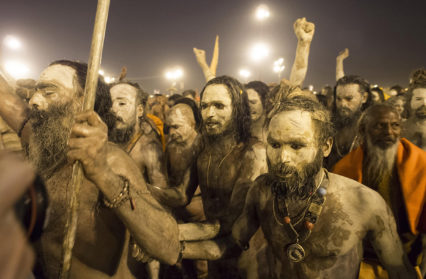Kate Mercer recently attended The Eye International Photography Festival at the Aberystwyth Arts Centre, showcasing the work of many talented photographers.
It was with great curiosity I travelled to Aberystwyth to attend The Eye International Photography Festival at the world famous Aberystwyth Arts Centre. Located on the campus of Aberystwyth University, the third instalment of this ambitious celebration of photography saw a full programme of talks, workshops, exhibitions and events in the furthest west of the country. Following other successful arts festival models in Aberystwyth, Photographer and Festival Director Glenn Edwards spoke of his desire for The Eye always being to establish an ambitious, credible and inclusive platform of photography in Wales outside of the cultural epicentre of Cardiff. Aberystwyth has an audience that accepts photography as art, not as a medium that is separate from it. In a venue that has previously exhibited photography by the likes of Sebastian Salgado, Robert Mapplethorpe and David Bailey, it is not difficult to understand why.
It is important to say though, that this festival is very different to other festivals of photography I have ever experienced. Thematically curated festivals are common in photography. For example, Ffotogallery’s Cardiff International Festival of Photography ‘Diffusion’ has focused on “Looking for America” in 2015 and “Revolution” in 2017; this year’s calendar-clashing curated program at Brighton Photo Biennial, produced by photographic development agency Photoworks, was titled “Beyond the bias – Reshaping Image” exploring photography’s role in defining and informing our understanding of concepts like identity and self-representation.
The team behind The Eye make no distinction between genres of photography, purpose or subject matter – equal impetus is given to fine-art and conceptual projects as it is to sport, fashion and photojournalism for example. It was positive to see that there was an equal balance of male to female speakers, of lesser and more established reputations, as well as younger and older photographers taking part. Furthermore, whilst all the internationally recognised contributors of the festival are invited by director Glenn Edwards to participate, the actual content of their presentations are chosen by the speakers themselves, guided by political and current affairs, but also by the photographs they’re are interested in taking.
It is a bold strategy, yet a successful one. It serves to illustrate the scope, utility and pervasiveness photography has in our everyday lives, particularly with practical examples that would not be found typically in a gallery context. Whilst there were in total 4 exhibitions advertised as part of The Eye festival programme, Nick Danziger’s : Revisited, the international touring show Privilege in a time of global inequality’, ‘Chris Wilson: Sakuteiki and The Box showing work of emerging photographers in Wales, there was also wall space reserved for showing the work by the local photography clubs that use the arts centre. The curation of the festival, in one building and on one site, was non-hierarchical, non-competitive, and non-rhetorical with the community it engaged with, all united under a common interest in photography.
The weekend’s events kicked off with A Fine Beginning – specifically James O’ Jenkins – who with great charm and good humour, regaled visitors with his photographic adventures. A successful commercial photographer based in London, much of the work he shared was of his personal projects such as ‘United Kingdom’ and ‘Thatcher’s Funeral’ (2013). His passion is undeniable; both in the sharing and taking of photography, his oration comes alive as much when he talks about his own practise as it does mentioning other photographers he admires. This energy carried through as he mentioned his other collaborative photographic projects, the Portrait Salon (a Salon-de-refusé of work from the annual National Portrait Gallery Taylor Wessing Photographic Portrait Prize) and A Fine Beginning (a platform that discovers and showcases photography being made in and about Wales, curated by the group and shared via their website). It was disappointing that his colleagues – Gawain Barnard tied up in teaching commitments, Abbie Traylor-Smith on assignment in Iraq photographing for Oxfam, Jack Latham promoting his new book Sugar Paper Theories in Guernsey, and Francesca Jones exhibiting at Photoworks’ Brighton Photo Biennial – were unable to join him at this event. Equally it is evidence of how engaged and successful this collective are, raising the profile of their practises and engagement with wider audiences outside of Wales.
On Saturday and Sunday then followed a series of talks, workshops, presentations and exhibition launches throughout the course of the festival. Ffoton Wales, an active supporter and promoter of Welsh photography and The Eye Festival, announced photographer Peter Jones as winner of their #urbanwales competition, receiving a free website designed by photography platform pixelrights.com. Andy Pearsall ran drop-in cyanotype workshops during the lunch periods, where attendees made prints of flora to take away on the day with them, and Mark Cleghorn ran flash workshops for visitors to perfect their technical skills from a fellow photographer. Tours were arranged by the festival team to visit the print room at National Library of Wales, where Curator of Photography William Troughton supervised visitors as they viewed prints from the library’s extensive collection. Magnum Photographer David Hurn and Eammon McCabe, festival compère as well as a revered photographer in his own right, also held portfolio reviews for younger photographers, advising them how to take their photography further.
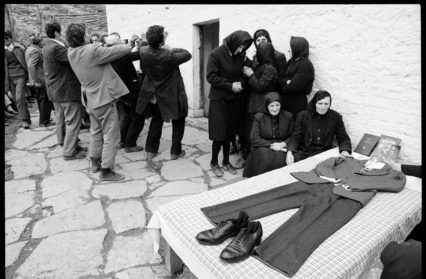
Rhodri Jones – returned from Italy – delivered a bi-lingual, clear and precise presentation on lessons he’s learnt being a photographer whilst working all over the world. Specifically aimed at the younger members of the audience, Jones went through key photographic moments of his career, stressing the importance of observation rather than intervention in photography; the importance of humility, to be open and understanding in moments where you do not agree with other people, and that the subject is always the most important part of photography, not the photographer.
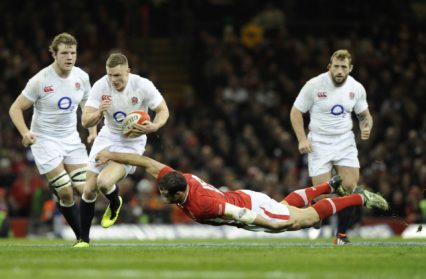
Rebecca Naden, the Reuters agency photographer for Wales, is one of the most successful female photographers of her time, working in what is a largely male dominated area of photography. Having photographed seemingly everyone from Royalty to athletes, political events to current affairs, her impressive portfolio is equalled only to the knowledge of her subject matter. Showing the festival audience the extent of her kit – inclusive of but not limited to 4 cameras, 2 step ladders, waterproof clothing, portable my-wifi kits, back-up kit etc – it was clear the commitment, organisational and technical ability someone needs to be an agency photographer, delivering pertinent, accurate and quality images on every assignment.
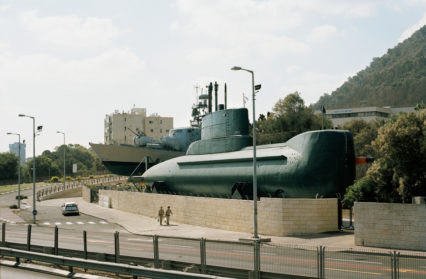
Mount Hermon, Golan Heights.
Israeli border close to Lebanon and Syria . Zed Nelson, The Eye International Photography Festival
Zed Nelson’s work looked over the projects and progress of his career. From the first photo he had published from a fabulous “Fuck the Poll Tax” demo in London, to his first publication ‘Gun Nation’ (2000), ‘Love Me’ (2009), to his more recent work in ‘Israel: In this land’ (2016) and ‘Portraits of Hackney’ (2014) – all work that questions narratives that are so visible to us, so commonplace, that they are now almost invisible. His images were extraordinary and the audiences reactions entertaining. As well as the candid photos he showed of plastic surgery from Nelson’s book ‘Love Me’, the photograph that remained in my mind was an image from ‘Gun Nation’ of bullets in a bucket from a gun store with a scoop in it – a lethal pick-and-mix where the bullets take the place of sweeties. Exceptionally intelligent work, and again, delivered with great charm and generosity.
Next came music photographer Jill Furmanovsky, who talked about her career and print platform ‘Rock Archive’. Showing portraits from her extensive portfolio, Furmanovsky took the audience through music history with photographs of Pink Floyd, Oasis, Nick Drake, Bob Marley, Bob Dylan (a notoriously uncooperative subject), The Sex Pistols, The Clash, Björk, Amy Winehouse, to more contemporary day musicians like Biffy Clyro and Florence Welch. In fact if you can name them, Furmanovsky has probably photographed them! She is still as passionate as she has ever been about her photography and the musicians she works with. Or as she put it, “The only jewellery I’ve ever covetted was an access all areas pass – you can keep your diamond and pearls.” With her latest project ‘Rock Archive’ launched in 1998, Furmanovsky has developed a picture collective in partnership with other rock photographers and visual artists to make their work more accessible and available to fans and collectors around the world. From her days starting out at The Rainbow Theatre in London, Furmanovsky is another strong female photographer who shows that tenacity and passion for your subject matter can take you to places you could never imagine.
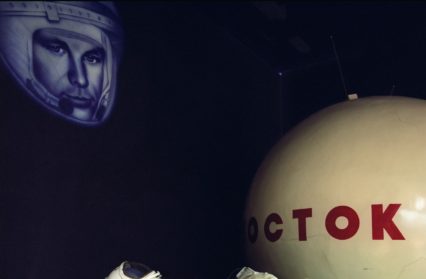
Maria Gruzdeva, a Russian Fine Art Photographer, talked about her work ‘Direction – Space’ exploring the legacy of Cosmonauts and Star City – Russia’s space exploration centre – that steeped in superstition and tradition, remains as though a time capsule to the space race of 1970’s. Compared to the other speakers over the weekend, her presentation was noticeably different – she presented one body of work, which although observational was arguably the most fine-art aesthetically approached of the weekend. In this project, her photographs capture a world and spaces still imbued with communist iconography, bold printed fabrics, crash test dummies, computer towers the size of boxes alongside occasional portraits of the community that live and work there. These people’s culture live and dream space exploration as though it was as integral to their lives as DNA; there are references to it on their stamps, in their artwork, in their playgrounds and their homes. All the photographs in this project however are considered, and taken at a deferential distance. Rooted in storytelling, Gruzdeva talked the audience through each image to explain their context, the implications of the photographs as well as how the opportunity to take them came about. Whilst necessary (by which I mean the whole sequence of images in Gruzdeva’s work are required to tell the story of the project in it’s entirety, rather than one image on it’s own) also animated her photographic approach with the passion, heritage and context of the community it portrayed. Successfully too – greeted by what was possibly the longest question and answer session of the weekend, her work clearly engaged the attention and interest of the festival’s audience despite being presented in a way dissimilar to other contributors of the festival.
Sophie Batterbury, Picture-editor of The i Newspaper, shared with the audience the responsibility of her role, the changing scope of picture editors in a digital market (seeing up to 30,000 image submissions per day at times), and how important truth is to an image, and also for young photographers, how to approach people like her when finding an audience for their images. When talking talked about the integrity of photographs as documents, a discussion around truth in journalism ensued – what’s the point of using a photograph if you can’t trust it? Publishing infers a photograph’s content is correct, therefore it must be accurate.
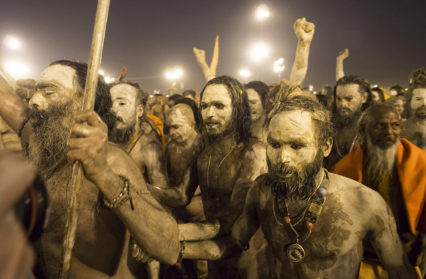
And, taking us one step further – Nick Danziger – arguing that single images are not enough, there needs to be a story. As well as being a speaker at the festival, an exhibition of Danziger’s work opened at Aberystwyth Arts Centre on the Saturday night, entitled ‘Revisited’. Painfully juxtaposed by the separate exhibition ‘Privilege in a time of global inequality’, Danziger’s work taken over a period of 10 years, the exhibition revisits people he has photographed on assignments as a photojournalist around the world, capturing changes that have happened to those who have very little, and who endure very much. Listening to Danziger’s speak, suddenly many things become clear about his work – his passion for photography is rooted not only in the photographs he’s interested in taking, but in the relationships he has with the people he photographs. Whatever their background, rich, poor, wretched or privileged, his work is designed to make you stop, make you look, make you think, and make you feel. The photographs on display at Aberystwyth are not meant to be comfortable to see; they are there to make you react.
As I hope I have conveyed through this review, there was such a wealth of content to this weekend’s event, the value of it is beyond doubt to audiences interested in photography. And, other than the act of taking photos and their very practical purpose – to record, to document, to capture – what resonates here are people’s passion for taking photographs as well as photography’s acute ability to tell stories to new audiences. I must concede though that by the end of Sunday afternoon, whilst leaving feeling unequivocally inspired, I also felt somewhat photo-saturated. That is not to say that every audience member must attend every session and every event over the three days – people are of course free to come and go as they please. But with an opportunity to hear first hand international photographers talk candidly about their capers – why would you? What is more, these international photographers are accessible; there is little gap between the professionals and their audiences, sharing their advice and knowledge. They are all approachable, all amiable, and all welcoming of good coffee and the occasional glass of wine.
Speaking with Glenn, the audience and attendance figures continue to grow every year. A ticketed event in an auditorium holding around 300 people, it was affirming to look around and see the diversity of the audience members who had made the trip to Aberystwyth. From professionals to hobbyists, camera clubs members to students, from various ages and a wide array of backgrounds, I feel confident in saying that at The Eye, there is something to be enjoyed by everyone at this event over the weekend. However, if you prefer a festival with a specific focus or specialism, this may not be the event for you, though I still suggest you gave it a try. It is the perfect environment for anyone with a practical interest in photography to find out about the variables and intricacies of a photographic career, as well as an opportunity to be introduced to new projects, new ways of presenting work, and meet like minded individuals from all across Wales.
Despite my best efforts, with two years until the next festival, Glenn Edwards was not giving away any clues as to who he will be inviting to take part next time. Who knows what conversations will happen at the next festival.
The Eye International Photography Festival
30/09/2016 – 02/10/2016
Aberystwyth Arts Centre / Aberystwyth / Wales
(Header image by Nick Danziger)


